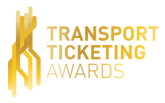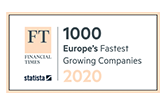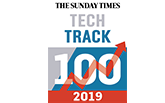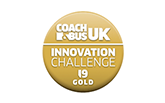The Ticketer team is made up of a brilliant bunch of people who are committed to the future of our customers’ businesses and the future of public transport. Some you know well, some are there on the phone when you need them, and some you may never meet but work incredibly hard behind the scenes, continually improving our service and product.
In this blog series, we’ll be asking members of our team 10 important questions, giving you a glimpse into life at Ticketer and the people that make the magic happen.
This week, we’re chatting to Jason Mann, our Head of Product Management and longest serving team member (by choice may we add!). Here he shares what he does day-to-day, how he came to join the Ticketer family and what he thinks the next big thing will be in public transport.

1. So, Jason, can you explain what your role is within the Ticketer team?
I manage the direction and roadmap of Ticketer’s products. Essentially, I take the feedback that we get from our customers, operators and internal staff, break it down, see if such a feature is possible and manage how and when it can be designed to harmoniously coexist with our existing functionality. We never stop innovating and improving, so it’s a never-ending task.
We work closely with our customers, which is a great part of my job, and they’re always happy to share suggestions so we can work on making a real impact to their businesses. Plus, it keeps our development team busy!
2. How did you start your journey with Ticketer?
Before Ticketer I worked for Nexagent, a small, energetic start-up in the telecoms space. After 7 years we were acquired by EDS; a large US Systems Integrator, which was then acquired by the tech giant, HP. It was clear that the focus wasn’t going to be on integrating our platform but on the bigger merger, so I took the opportunity for redundancy. I knew I wanted to work for a small start-up company again, and as luck would have it, my brother had just joined the founder, John Clarfelt, on a new venture. One interview later and the rest, as they say, is history.
3. What was it about Ticketer that caught your interest?
Having spent time working for both start-ups and a huge company with 130,000 employees, I knew that I wanted to go back to a smaller company. I was looking for somewhere where I could have a direct impact on the success and direction of the company. Ticketer seemed to be a natural fit. Plus, you don’t get many opportunities to completely shake up a market vertical – although at the beginning, we couldn’t have predicted just how much of an impact we would have.
4. Has the world of bus ticketing lived up to everything you were expecting?
I must admit, coming from the world of telecoms was a bit of culture shock. I went from a supplier business where we were designing, planning and measuring big networks, to what appeared to be a ‘box on the bus’. Ironically, that’s precisely what our solution is moving the field of ticketing away from. When we first started, we wanted to build a platform that was more than just ticketing. Unlike existing solutions, our “box” used a communications network connected to a management system hosted in a state-of-the-art data centre. Whilst this is quite standard now, it was pretty radical for this industry when we started in 2009.
5. Is there anything different about this industry compared to what you had experienced before?
As a product manager, especially in the telecoms market, you’re always trying to find features that give your customers a competitive edge. But in this industry, whilst competition does exist, it’s not at the forefront of operators’ priorities. To them, their primary aim is to provide an effective, excellent service. And if you can enable your customers to do that easily and efficiently, then you’re winning.
6. What are the biggest challenges facing Ticketer customers today?
One of the biggest problems for our customers is that public transport operators are being challenged more than ever before. Not only do they have to maintain service levels despite reductions in local authority funding, but they are also dealing with ever growing congestion, and increased competition from transport alternatives like Uber. For them, it’s how to make the bus the best choice for the passenger.
7. How does Ticketer respond to these challenges?
At the simplest level, we consider the end user first – we look at ways we can incentivise the passenger to use the bus. Our passenger app is a good example of that. Give the passenger information on where the bus is in real-time, and they are more likely to catch the next bus (or in my case, stay in the bar for ‘just one more’ because I know the bus is 20 minutes away!). We’ve also introduced personalised ticketing coupons because passengers might be more incentivised to use the bus if they are going to get 50p off a cup of coffee when they get into town.
8. And how can Ticketer help the operators?
We’ve developed our technology so that operators can create the best experience possible for passengers, as well as giving them everything they need to do their job effectively. A great example of this is our Schedule Adherence feature. We didn’t just stop at reporting to the back office how the bus was running, we also gave that information to the driver through the ETM, so they can see how late – or early – they are against the timetable. It’s had an amazing effect of reducing early running for those operators who have adopted that feature.
9. With all of these challenges and innovations, do you think bus services will remain the same?
I think there will always be a place for buses – they are essential for local travel in lots of communities, but there’s an opportunity for a new mode of service. We’re interested in how the merging of Demand Responsive Transport (DRT) with more traditional forms of bus services could work. We know that as belts tighten, there will be routes at risk of reduced service, and yet these services are still central to communities who will be forced otherwise to find an alternative mode of transport. If we can move away from an infrequent schedule and move towards a dynamic and responsive model, it will open up a whole new world of opportunities for bus operators and passengers. Of course, this won’t be possible without technology and this is where we come in.
10. Time for the big one. What can we expect from ticketing, and Ticketer, next?
We’re always brainstorming ideas on where to take Ticketer next. We designed our solution so we’ve had the added advantage of being able to take the platform in the direction we see fit. That’s because our platform solution is much more than just an ETM management system, it’s increasingly being used by operators to manage their fleet. We’ve already seen success with our tracking, driver messaging and Scheduled Adherence features, and we have even more ideas coming.
When it comes to ticketing, account-based ticketing will increase in popularity in the short term, but we can support that now, so we’re looking beyond that. At the moment, we’re looking at the wave of ‘frictionless ticketing’ methods that are being considered in the industry and how we can build on that. As they say, watch this space…
Jason is just one of the brilliant people behind Ticketer, who support our customers every day to make things better. If you’re interested in joining the team, you can see what roles we have available.
















